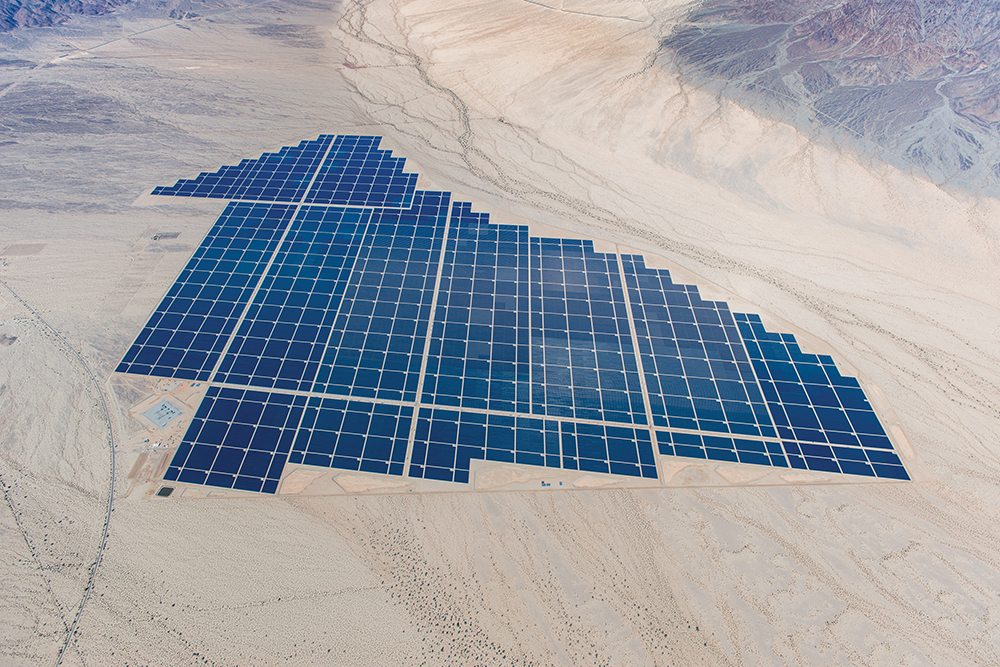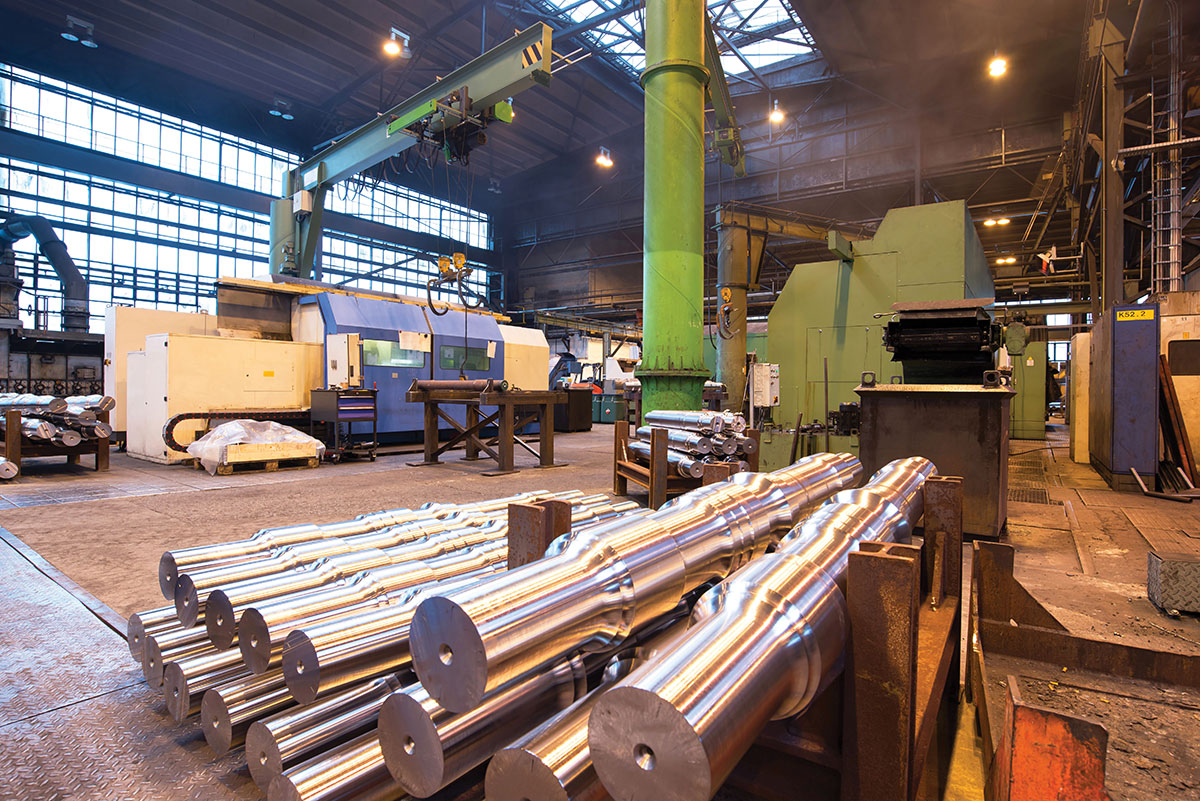Large-scale PV plants have become commonplace in the desert southwest with plants routinely exceeding 100 MW in size. The largest plants in the U.S. are over 500 MW. [China has the largest such plant at 2,000 MW.] These large-scale plants make up well over half of all PV installed in the U.S. and are destined to increase that ratio over time as the rooftop market becomes more saturated in various states. That is all well and good, but how does that impact the local authority having jurisdiction (AHJ), and why is Article 691 for large-scale PV electric supply stations even needed in the NEC?
Why do we need Article 691?
The answer lies in the scope of the NEC. Exempt from the NEC are utility-owned properties [NEC 90.2(B)(5)]. So, what about facilities not owned by utilities? They fall under the scope of the NEC. PV systems have been covered in Article 690 since 1984, and there is no upper limit on the size of these systems for the jurisdiction of the NEC. Therefore, a 500 MW PV system falls under the jurisdiction of the NEC when not owned by the utility. So, what’s the problem? Until the advent of large-scale PV systems, local AHJs rarely set foot on power plants for inspections other than to review ancillary buildings on the property. As a power plant engineer stated while working on Article 691, “The only power plants that were ever inspected by local AHJs were our PV power plants—every single one of them was inspected by the local AHJ, and none of our other plants were inspected.” That is only one engineer’s experience but it illustrates a key point.
These large-scale PV stations have been the focus of several excellent articles by Scott Humphrey wherein he points out the many deficiencies he has witnessed in the past six years when he has been inspecting these large-scale plants. While it is now no secret that various deficiencies can exist in these types of systems, the bigger question is whether the local jurisdictional enforcement is the proper entity to verify safety and compliance with codes and standards.
Indeed, John Wiles, in the November/December issue of IAEI magazine, cites Mr. Humphrey’s articles and goes on to say that that there is a “continuing need for close and detailed inspections of these installations by the AHJ supervising a team of inspectors.” This author believes that this viewpoint can be misleading and is ultimately a disservice to AHJs. Confusion over the need for Article 691 is common across many jurisdictional levels, not to mention prominent people with experience in the solar industry.
As chair of the NFPA Task Group that developed Article 691, this author believes that there needs to be a proper understanding of why Article 691 is necessary and how to apply it. NEC 2017 sets forth a process by which the AHJ can fulfill their obligations without becoming large-scale PV power plant experts. This is good news. After reading the list of deficiencies enumerated in articles about large-scale systems, I feel that I can never attain the level of experience necessary to inspect these plants—and I am considered a PV system expert. Rather than getting depressed and considering a different line of work, let’s look into what Article 691 says and how AHJs can use the article to ensure that power plants in their communities are designed and built to be assets to the community rather than liabilities.
What does Article 691 say?
First, Article 691 applies only to a very restrictive type of PV system. Not only does the plant have to be at least 5 MW in generating capacity, but five special requirements that must be met are also listed in 691.4:
“(1) Electrical circuits and equipment shall be maintained and operated only by qualified personnel.
Informational Note: Refer to NFPA 70E-2015, Standard for Electrical Safety in the Workplace, for electrical safety requirements.
“(2) Access to PV electric supply stations shall be restricted by fencing or other adequate means in accordance with 110.31. Field-applied hazard markings shall be applied in accordance with 110.21(B).
“(3) The connection between the PV electric supply station and the system operated by a utility for the transfer of electrical energy shall be through medium- or high-voltage switch gear, substation, switch yard, or similar methods whose sole purpose shall be to safely and effectively interconnect the two systems.
“(4) The electrical loads within the PV electric supply station shall only be used to power auxiliary equipment for the generation of the PV power.
“(5) Large-scale PV electric supply stations shall not be installed on buildings.”
Simply put, the only purpose of the plant is to generate power for the utility distribution and transmission system. It does not feed power to customer load and cannot be mounted on roofs. Even though I have designed one of several 5 MW rooftop PV plants that currently exist, these systems cannot fall under Article 691.
Now that we better understand the scope of Article 691, let’s take a closer look at how plan check and field inspections are intended to be performed. Engineered design in section 691.6 covers the plan check portion of the installation.
“691.6 Engineered Design. Documentation of the electrical portion of the engineered design of the electric supply station shall be stamped and provided upon request of the AHJ. Additional stamped independent engineering reports detailing compliance of the design with applicable electrical standards and industry practice shall be provided upon request of the AHJ. The independent engineer shall be a licensed professional electrical engineer retained by the system owner or installer. This documentation shall include details of conformance of the design with Article 690, and any alternative methods to Article 690, or other articles of this Code.”
This section sets forth a documentation trail that is made available to the AHJ upon request. The purpose of the documentation is to show that the installation meets the requirements of the NEC directly or has appropriate alternative methods that are evaluated by an independent licensed electrical engineer.
The field inspection portion of the article is similar to the plan check section in that it requires a field inspection report to be made available to the AHJ showing that the installation conforms to the approved engineered design. Compliance reports from the independent engineer are to be made available to the AHJ before commercial operation.
The remaining aspects of Article 691 deal with specific issues where large-scale PV plants may have variances to Article 690. These areas include 691.5 Equipment Approval; 691.8 Direct Current Operating Voltage; 691.9 Disconnection of Photovoltaic Equipment; 691.10 Arc-Fault Mitigation; and 691.11 Fence Grounding. For each of these major topics, the article provides insight into how an engineered design may address these topics. For instance, 691.10 Arc-Fault Mitigation reads:
“PV systems that do not comply with the requirements of 690.11 shall include details of fire mitigation plans to address dc arc-faults in the documentation required in 691.6.”
In actuality, arc-faults are only one of several ways a fire could start on a large-scale PV facility. Another reason for fires includes hot work (NFPA 51B) related to construction or repair work. Regardless of how a fire starts, an active fire mitigation plan is far more beneficial to preventing the hazard and damage associated with fires than only relying on arc-fault detection. The last thing any community wants is for a power plant to start a wildfire that could spread outside the facility. Simply employing arc-fault detection is insufficient to prevent this event. Additional measures such as fire breaks, on-site fire suppression, and coordination with any local fire service resources are crucial for overall fire safety.
Now I am confused, do I need a team of inspectors or Article 691?
Implementing Article 691 is not a choice between whether or not enforcement will take place. The process set forth by Article 691 provides a structure so that the local enforcement receives documentation that the project meets the necessary safety requirements. The local AHJ and community are not the only stakeholders being assured that the plant is designed, built, and operated in a safe and efficient manner. The financiers of the plant, which includes the likes of Warren Buffett, are keenly interested in the project being an asset, not a liability. The pressure from financiers of power plants is intense and often relates to compliance with required codes and standards.
The untold story behind some of the examples provided by articles enumerating alleged codes and standards violations is that these items were cited before the in-place quality assurance entities had the opportunity to identify and address these issues. Many of the deficiencies cited would have been addressed had the existing independent engineering and quality control entities been given the opportunity to fix the problems. This situation does not mean that every AHJ employ an expert. The layers of independent inspections are designed to catch mistakes throughout the process.
Lastly, what if all the inspection processes miss a key safety issue that causes damage to a plant, or injures a worker on the site? Would a local inspector have prevented such an issue? Perhaps it might have, but a very real liability trail is in place to identify and eliminate deficiencies. Many non-solar power plants have had various major design and construction defects. Even with the involvement of numerous independent engineers and inspectors (non-AHJs), some of these problems have caused significant damage to property and even loss of life. These issues and problems are unlikely to have been avoided by the involvement of the local AHJ.
Conclusion
Problems in power plants get identified and fixed. Those responsible for the problems have to fix the problems. The world of power plants is dramatically different from construction where the public is exposed directly to the consequences of design or construction defects. This article is not intended to undermine or diminish the importance of educated and competent local code enforcement personnel. It seeks to show a clear path forward to deal with massive projects that tend to be well beyond the direct capabilities of a local jurisdiction. Following the simple and straightforward guidelines of Article 691 provides the AHJ with access to solid documentation on the compliance of the design and construction of a large power plant. In the process of developing the independent documentation for these plants, problems will be identified and solved. Local AHJs can rest easy not because they avoided their fiduciary responsibilities, but because they understand that the key safety and compliance issues have been addressed.











Find Us on Socials